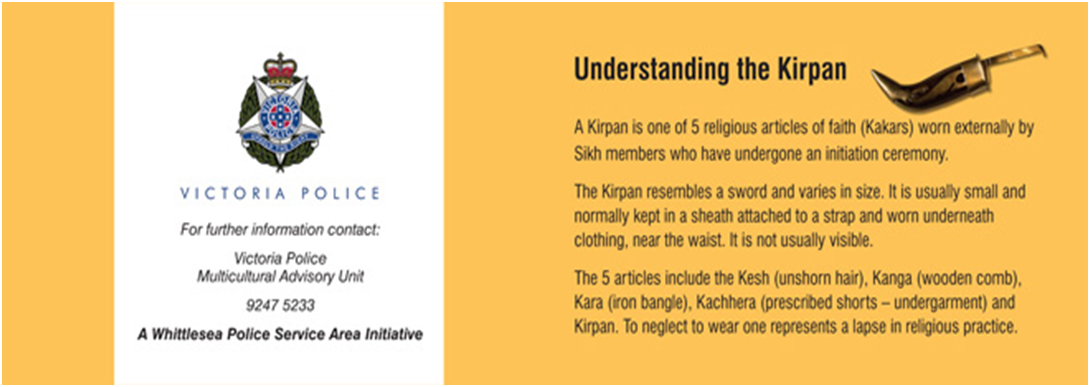Sikhism recognises all human beings as equal. The Sikh Holy Scripture recognises complete equality between women and men in all spheres of life; political, social and religious. Guru Nanak said ‘Why downgrade woman, when without woman there would be none.’ and ‘it is she who gives birth to kings’.
Sikhs believe steadfastly that all people have civil rights, including the freedom of religion. The fifth Guru was tortured to death in 1606 by the Mogul Emperor for practicing of his religion. The ninth Guru was martyred in 1675 for his stand and practice of freedom of all religions. His message to the people was ‘Fear none, frighten none; Love the Lord Mighty One.’
Sikhism is against injustice and oppression. Injustice and oppression violates God’s order. Harmony has to be maintained by His Will. As an instrument of God it is the spiritual duty and responsibility of a religious person to confront all kinds of injustice. After the martyrdom of the fifth Guru, the sixth Guru wore two kirpans, one symbolizing Piri and the other Miri; they respectively represent divinity and worldly leadership. This meant that the Guru would defend the religious and human rights, if need be even with the sword.
- Kesh: Unshorn hair usually tied up as a knot and crowned with a turban.
- Kanga : Small wooden comb (placed in the hair knot under the turban)
- Kara : Iron bangle (worn on the wrist)
- Kachhera : Prescribed shorts (worn as an undergarment)
- Kirpan : Small sheathed sword (made of steel/ iron)
The wearing of the five K’s is mandatory for the Amritdhari Sikh. He/she is to keep them at all times. To neglect to wear one or more of the five K’s represents a serious lapse in religious practice. Even in the event of death these articles are not to be removed from the deceased person. Article XIX (e) of Sikh Code Conduct states: “the dead body should be bathed and clothed in clean clothes. While that is done, the Sikh symbols – comb, kachhera, kara, and kirpan should not be taken off.”
Along with the maintenance of five articles of faith an Amritdhari Sikh has to recite daily prayers at appropriate times of the day – morning at dawn, during the evening at sunset, and at night before retiring to bed.
A Sikh is to practice truthful living through constant meditation in praise of God, earn an honest living, give to charity and provide selfless service to humanity.
An Amritdhari Sikh is forbidden to: (i) cut his or her hair from any part of the body; (ii) engage in sexual activity with a person other than one’s spouse; (iii) use tobacco, alcohol, drugs or intoxicants, (iv) consume sacrificial meat prepared in accordance with other religious rites.
The word Kirpan is derived from the word ‘Kirpa’ and ‘Aan’, ‘Kirpa’ means an act of compassion or mercy; and ‘aan’ means honour. It is a ‘bringer of mercy’ symbolizing the Sikhs commitment to resist oppression and injustice.
A Sikh having taken Amrit becomes a Sant- Sipahi – a saint soldier as initiated by Guru Gobind Singh. He has pledged to uphold principles of high moral values and social justice. The external articles are simply a reflection of his internal spiritual self.
To take away the kirpan from a Sikh is to violate his/her religious freedom.
Recognizing that wearing of a kirpan is a religious requirement, the Constitution of the Republic of India, Explanation 1 under Article 25 reads “the wearing and carrying of the kirpans shall be deemed to be included in the profession of the Sikh religion.”
According to the Sikh Code of Conduct a kirpan is worn using a strap that enables it to be suspended near one’s waist. In practice the strap holding the kirpan is worn under clothing. It is not visible. It is worn in a safe and secure manner.
The size of the kirpan can vary. It is usually small, a few inches so the person wearing it is comfortable and mobility is not restricted.

Victoria
Entry to Parliament Victoria
New South Wales
South Australia
https://vsgc.org.au/wp-content/uploads/2024/10/SA-Kirpaan.pdf


